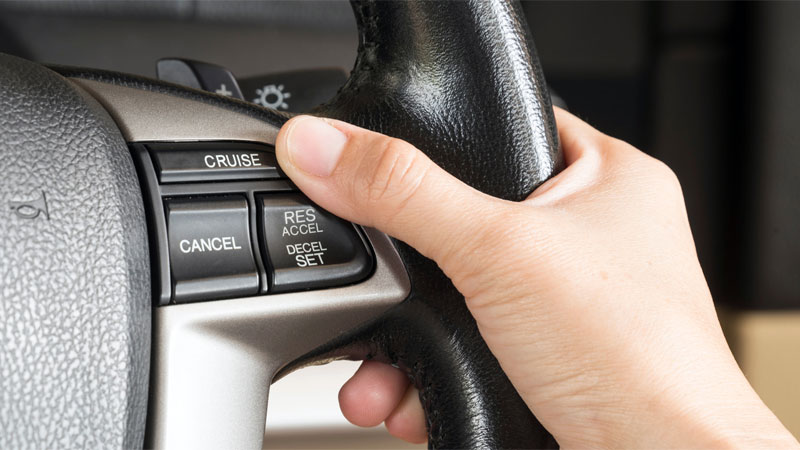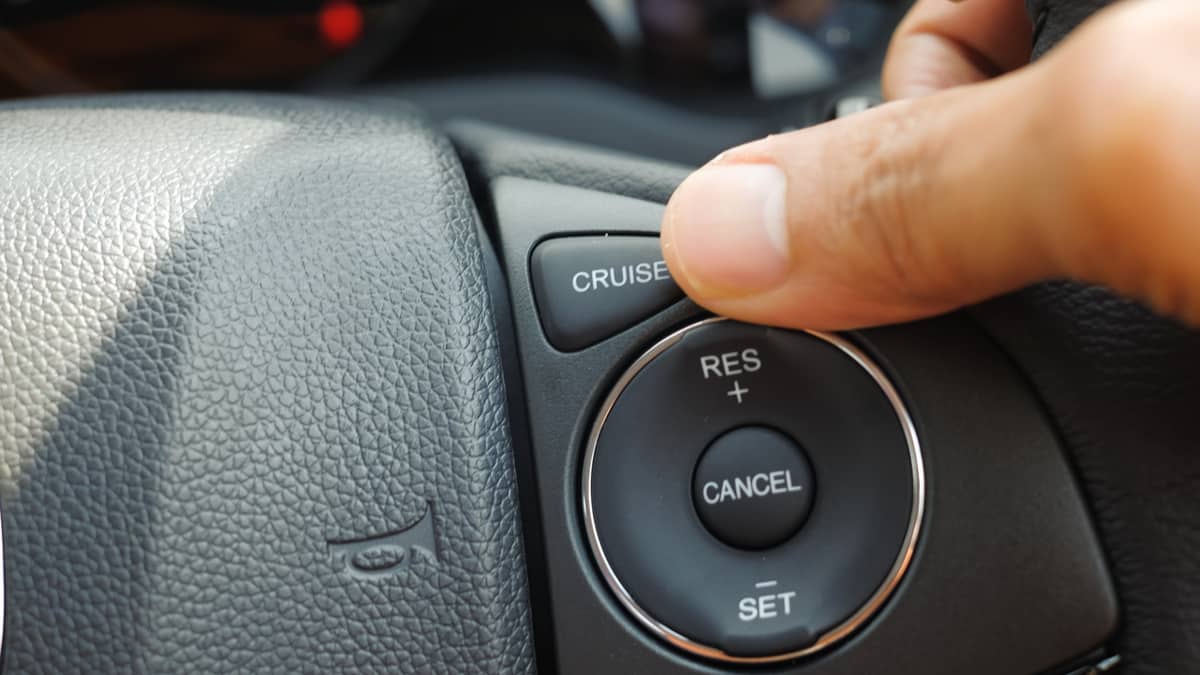Table Of Content

In this post, we'll explore how cruise control works, its benefits, and how to use it safely to make your driving experience more comfortable. Two companies are developing a more advanced cruise control that can automatically adjust a car's speed to maintain a safe following distance. This new technology, called adaptive cruise control, uses forward-looking radar, installed behind the grill of a vehicle, to detect the speed and distance of the vehicle ahead of it. The driver activates cruise control by moving a switch or button usually located on the steering wheel or center console of the car. They then set the desired speed, often by pressing the “Set” or “Cruise” button on the steering wheel.
Reduces Fatigue
Cruise control is a popular feature in modern vehicles that can make driving more comfortable and less stressful. There are several types of cruise control systems that drivers can choose from, depending on their driving conditions and preferences. Standard cruise control is the most basic system, which allows the driver to set a constant speed that the vehicle will maintain. Adaptive cruise control, on the other hand, uses sensors to detect the distance and speed of vehicles in front of the car, adjusting the vehicle’s speed accordingly to maintain a safe following distance.
Cancel Button
Cruise-control is most effective during extended journeys on expansive, straight highways, such as interstate highways, where vehicles are maintaining a relatively steady pace. It is not suitable for use in stop-and-go traffic, inclement weather conditions like snow, ice, or heavy rain, or on narrow, winding roads with frequent changes in speed limits. Disengaging cruise control in these scenarios could require significant time and attention, potentially leading to accidents. Cruise control is far more common on American cars than European cars, because the roads in America are generally bigger and straighter, and destinations are farther apart.
What is adaptive cruise control?
This type of cruise control automatically adjusts the speed of the vehicle to maintain a safe following distance and can even bring the vehicle to a complete stop if necessary. Adaptive cruise control improves upon conventional cruise systems by not only maintaining a preset speed, but also by automatically keeping a safe distance between your car and the vehicle in front of it. Using forward-pointed sensors, cameras, or both, adaptive cruise control maintains your preset speed while constantly monitoring the vehicle in front of you. However, the kicker is, it automatically slows and accelerates to maintain a predetermined following distance. More sophisticated adaptive cruise control systems can bring your car to a full stop If necessary.
Does cruise control save fuel?
This works in a similar way to the brake booster, which provides power to your brake system. Some of today’s cars are equipped with adaptive cruise control (ACC). Many of us would admit that we’re not very consistent in maintaining a steady speed on the road, even on motorways. By eliminating the need to control speed with the feet, this feature can help reduce leg muscle fatigue and overall driver fatigue.
How It Works: Adaptive cruise control - Driving
How It Works: Adaptive cruise control.
Posted: Wed, 08 Nov 2017 08:00:00 GMT [source]
Another component is the speed control module, effectively the "brains" behind the system that remembers the desired speed. Some iterations of a cruise control system will merely alert the driver to take action if a preceding vehicle gets too close. Other systems will take evasive action and brake the car automatically. Modern stop-and-go systems, often termed traffic jam assist, takes the hassle out of navigating rush hour traffic. If you wish to cancel the cruise control, the "can" button will place system into standby mode. If it needs to slow down, cruise control typically eases off the power rather than applying the brakes.

Find Car News
This system measures the actual speed of your car over a certain distance and then measures the intended speed of your car over the same distance. Each car with cruise control has a basic computer under its dashboard, usually known as a PID (Proportional-Integral-Derivative Control) system. On slippery roads – that includes snow, ice, heavy rain and hailstorms – as this increases the chances of sliding. If you want to return to your previously programmed speed, just press ‘resume’.
Cruise Control and Road Etiquette

Cruise control was originally designed to be used on long drives and road trips when it’s possible to maintain a constant speed. Adaptive cruise control is what makes semi-autonomous driving possible. In general, a car with ACC incorporates some combination of radar sensors, lasers, and cameras to identify other vehicles or obstacles in the vicinity. Radar- and laser-based systems both make use of sensors integrated into the vehicle's front fascia.
Consistent Speed
Volkswagen cruise control accelerates owner's car without warning: report - Business Insider
Volkswagen cruise control accelerates owner's car without warning: report.
Posted: Mon, 23 Jan 2023 08:00:00 GMT [source]
[5] “6 Cruise Control Safety Tips You Should Never Ignore,” Marisol Pereira and Carrie Adkins, getjerry.com/advice/6-cruise-control-safety-tips-you-should-never-ignore-by-marisol-pereira (accessed April 27, 2022). Cruise control works best on long stretches of relatively flat, straight road, where it only needs to make minimal adjustments to maintain your speed. Our goal is to establish an auto repair process that is less stressful and much more trustworthy for everyone involved. Our website hosts a car repair Estimator that gets rid of that "ripped-off" feeling. We also provide matches to local Certified shops that are guaranteed to do repairs with quality parts, a fair price, and a trained, awesome staff. This was my 4th long drive on my Hycross and I learnt a lot of things about this hybrid vehicle in this specific trip.
This is achieved through a radar headway sensor, digital signal processor and longitudinal controller. If the lead vehicle slows down, or if another object is detected, the system sends a signal to the engine or braking system to decelerate. Then, when the road is clear, the system will re-accelerate the vehicle back to the set speed. Cruise control is a feature commonly found in cars and is used to maintain consistent vehicle speed without the need to constantly press the accelerator pedal. The driver can set the cruise control with the cruise switches, which usually consist of ON, OFF, RESUME, SET/ACCEL and COAST. These are commonly located on the steering wheel or on the windshield wiper or turn signal stalk.
Conversely, if you go up a hill, the reverse occurs – the level of acceleration that is detected by the PID system sinks, and the system responds by opening up the throttle. The derivative of these systems is acceleration, which is also closely monitored. Cruise control systems monitor current acceleration, reacting to changes in speed. The integral factor is a way in which the speed of a car is calculated over time.
Once the cruise control feature is activated, use the “Res+” (Resume/Accelerate) button to increase vehicle speed. Press this button to restore the last set speed if you have canceled it previously or to accelerate the vehicle from the current speed. This includes pressing the brake, pressing a special cancel button, or moving a special switch on the steering wheel. This cancellation allows the driver to take control at any time if the situation requires it.

No comments:
Post a Comment